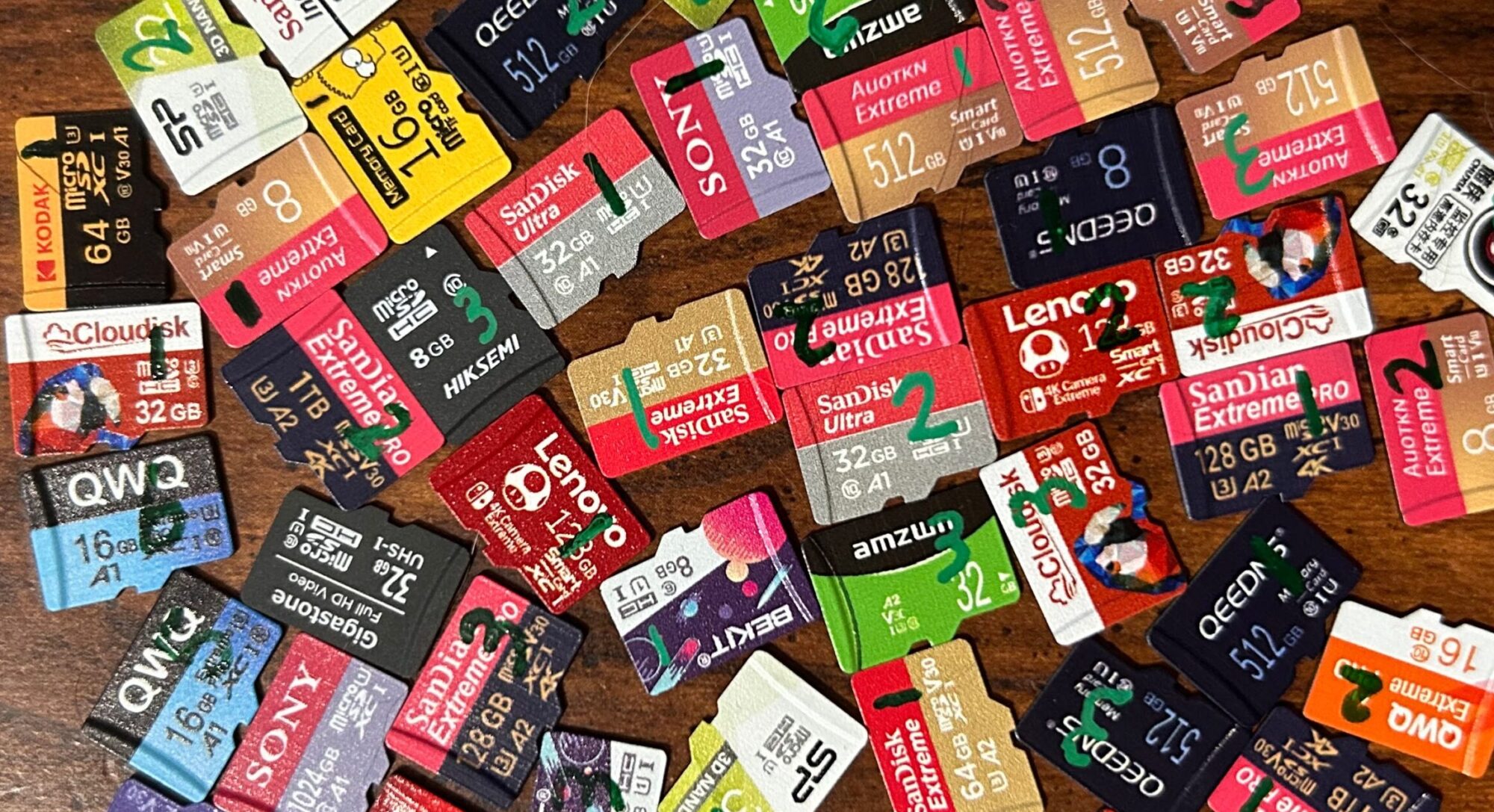QEEDNS (I’m just assuming it’s spelled in all upper-case, because that’s how it’s printed on all of their cards) is another brand that popped up with some regularity when I was browsing AliExpress. This card arrived in a generic red packaging that seems to have been shared with a few other brands, such as Auotkn, Microdrive, the knockoff Lenovo cards, SanDian, and the knockoff Sony cards. This packaging does not have any brand name, manufacturer information, the size of the card, or class markings on it — it was about as generic a package as you could get for an SD card and it doesn’t look like much effort was put into creating it. I bought it because I wanted to see if I could find authentic flash and fake flash in the same brand (spoiler: it turns out the answer is “yes”); however, I purchased two more later after I made the decision to try to test three of each model.
This card had its manufacturer ID and OEM ID set to all zeroes, a trait shared by several other off-brand/knockoff/fake cards. I suspect that this was done intentionally because whoever manufactured these cards likely doesn’t want their name associated with it. Bunnie (from Bunnie Studios) used the term “ghost shift” to describe runs of SD cards that are generally run off the books and using marginal material that would normally be disposed of — and I suspect that these cards are likely a result of these ghost shifts. Because of this — and the fact that, as far as I can tell, QEEDNS doesn’t have a website where they do business — these cards fail the criteria that I set out for determining what’s considered a name-brand card. However, they also don’t meet any of the criteria for being considered a knockoff — so these cards will go into the off-brand bucket.
Samples #2 and #3 were obtained separately from sample #1. While the register data is mostly the same between the three, there are a couple notable differences:
- Samples #2 and #3 have their serial number set to all zeroes. (I’ve only ever seen this in one other card: sample #1 of the Auotkn Extreme 8GB.)
- The SSR data indicates that samples #2 and #3 only support Class 6, whereas sample #1 supports Class 10.
Performance-wise, this card performed pretty poorly. All performance measurements fell somewhere between the 8th and 25th percentiles (as of the time of this writing), with sample #1 doing slightly better in sequential write and random read scores.
These cards carry the Class 10 and U1 markings, and all performance measurements were somehow good enough to qualify for both of these markings.
On the endurance testing front:
- Sample #1 experienced no errors for the first 6,111 read/write cycles; then, one day, I mounted the AC adapter (for the USB hub that this card’s card reader was plugged into) to the wall; I must have jarred something in the process, because all of the card readers on that host suddenly disconnected from the host machine; I had to reset the USB controller to get them working again. Afterwards, all of the other cards started working again, but this one refused to respond to commands.
Sample #2’s first error was an unrecoverable I/O error during round 4,577. During the next read/write cycle, it ran into more unrecoverable I/O errors; after working past the affected sectors, it began experiencing a large number of bit flip errors. Then, at some point, every sector started reading back as the same sequence of 8 bytes —
88 16 03 27 91 26 89 26repeated over and over again. Here’s the graph of this card’s progression through the endurance test, boring as it is:Sample #3’s first error was an unrecoverable I/O error during round 1. It continued to do well until round 4,597, when it started experiencing more I/O errors. I should note that this card was plugged into the same reader as sample #2, and started having issues around the same time. After it worked past the I/O errors, almost every sector experienced a write failure (where the data read back was actually from a previous round of testing). This was enough to put it over the 50% failure threshold. Here’s the graph of this card’s progression through the endurance test:
My conclusion: they performed terribly, their price per GB is high, and their endurance was below average. Yes, they did well on skimp, but that doesn’t excuse how terribly they did otherwise. Don’t buy these — they’re garbage.
October 19, 2025

